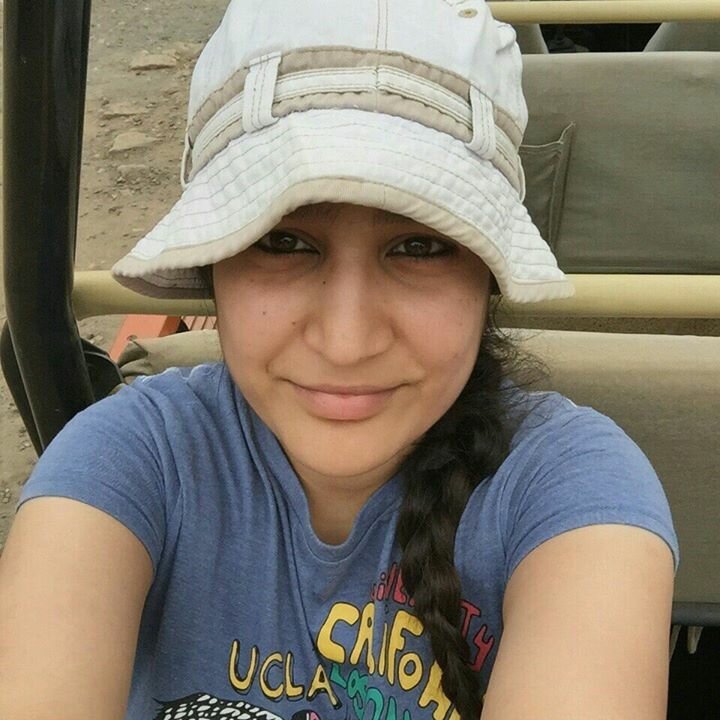Solo Traveller Nitish Thakur Shares Travel Tips For Himalayas & Some Bone-chilling Stories With JWB
- JWB Post
- June 25, 2016
This guy named Nitish Thakur, a frequent solo traveller, never unpacks his bag-pack. Weekends, religious holidays and few unpaid leaves have let him plan some of the most interesting expeditions in the Himalayas.
His pahadi stories have the power to pull you out of your house, and force you to write a leave application to your boss so that you can explore the majestic mountains of our country.
During his chat with JWB, he reveals all about them, at that, shares some golden tips on how you can be a solo-traveler, too!
Me: What kind of heavenly job do you do that enables you to plan frequent trips?
Nitish: I work as an Administrative Officer at United India Insurance Company. And yes, they have a pretty cool work environment.
Me: I am sure with this kind of experience, you must have been approached by well-known travel companies for travel projects.
Nitish: A few. However, I have just begun my travel journey, and I think, in future something like taking up commercial projects can happen. I can’t wait, though.
Me: Why do you ALWAYS choose the mountains?
Nitish: I think, no matter how many comforts we get used to, the innate nature in us is always inclined towards the sounds of rivers, dark skies, and winds in the mountains. Also, I have immense love for star gazing and the night sky.
You can’t see the night sky in the cities due to pollution. Most of my travel in mountains is planned around the new moon phase when you get starry night sky. Another reason is my liking for the works of J.R.R Tolkien, the author of The Lord of the Rings, and the music of Led Zeppelin. How they have described mountains in their works is something that had a lot of influence on what I present through my photographs. I also love how being in the mountains has changed my perspective towards travelling. Some people look for the divine by praying, some listen or play music, I travel to mountains, where I feel closest to the cosmos.
I suggest you begin your travel story with mountains. You can witness a surreal sunset with the last rays of the sun hitting the distant mountain peaks, and sometimes you go to Ladakh in winters and stand in between the vast and frozen high altitude lakes surrounded snow capped mountains. The other times, you hike so high above that you are on an island of mountains in an ocean of clouds. Sometimes you catch a glimpse of a shy deer, or if you have all the luck in the world, you can see the ghost cats, the snow leopards, camouflaged in their surroundings. I like how diverse it gets in the mountains.
Me: You just mentioned about capturing the night skies in your photography. Why there is so less about the ethnicity, local culture, and the people of Himalayas?
Nitish: I love capturing humans against the landscape of the Himalayas, the places we so often label as unreachable. My photographic journey is more focused on experiencing the tranquility.
Me: What thoughts come to your mind when you’re staring at the night sky?
Nitish: The thoughts revolve around the sense of relatedness one feels while looking up at the cosmos. I guess, it’s the same thought we have when sitting at the beach listening to the waves crashing on the shore. It’s like staring at your origins and finding a connection between you and the stars out in the sky.
Me: Which camera do you use?
Nitish: I use a Nikon d5100.
Me: What are the five must-haves in your bag?
Nitish: My camera and lenses, Tripod for night photography, Warm clothes for the cold and raincoat for the unpredictable weather, a book/novel as I love to read while travelling to my destination and a Tape!
Me: Do you travel alone or in groups?
Nitish: Solo travelling has its perks. I started out solo because most of my friends considered my travel plans unsafe due to hostile and remote terrains of the mountains and efforts one have to make to move through them. In that period, I met a lot of like-minded travellers and made new friends who, in turn, opened up new travel options. Although most of my trips have been solo, travelling in a group has its own fun.
Me: Do you have any scary moment from the dense jungles?
Nitish: Fortunately, I have never been stuck in a dense forest. However, this February when I was in Leh and had shared a taxi with five cousins from Haryana, something happened. It was their first time in Leh and on the way to Chang la, named the third highest motorable road in the world at 5300 mtr. above mean sea level, one of them started having trouble breathing due to Acute Mountain Sickness. We had to stop at the pass near Army camps to get him oxygen via nebulisation. After half an hour, we returned to our taxi. To our surprise the taxi wouldn’t start as the driver left the ignition off in -15 degree Celsius and the fuel in the pipelines froze! The next two hours were a constant struggle to warm up the fuel pipes by burning our gloves. All of the five cousins decided to turn back in an Army bus headed to Leh. I decided to wait for another taxi going towards Pangong lake. To my luck, just as we managed to ignite the engines of our car, another taxi appeared with five people as they had just dropped the 6th person at Karu due to sickness, thus making a vacant seat for me in their car. I asked for their permission to join in, and they gladly agreed. This further led to another adventure as I joined to those people in other travels while I was at Leh.
Me: Tell us more about the kind of interesting travelers you’ve bumped into.
Nitish: During my solo bike trip to Spiti valley in Himachal, I was chilling on Kunzum Pass with two Israeli travellers, one of whom made coffee for us at the height of 4590 mtr. above mean sea level with his portable stove and petrol as fuel. Just when we finished the coffee, two cyclists arrived at the pass. After some introduction, they told us they have been cycling from past nine months and started their journey from London in January crossing France, Italy, and the Mediterranean on a ship and entering India via Amritsar. Exciting, right?
Me: Any emotional story from the mountains that you want to share?
Nitish: Interesting was when I took my first solo bike trip from Manali to Leh. As I was descending Rohtang Pass towards Lahual Valley, I got stuck in thick mud while giving way to the incoming bus. I wasn’t able to move an inch since my foot too were stuck in thick mud. To my luck, a group of bikers arrived who helped me out of there.
On another trip, I was in Uttrakhand for Doditaal trek; I decided to go to a moderately high mountain pass called Darwa Pass. I was accompanied by two other trekkers who were on an exploratory trek. We had this news from the forest department guy at Doditaal that an English guy had left for Darwa top, the summit near the pass we were planning to go to. After 3 hours of hiking, we reached Darwa pass and saw the way to Darwa top laid out in the snow with a trail of the day-old footsteps leading towards the Darwa summit. The two hikers parted ways here and went on with their exploring to another side of the valley. I decided to carry on towards the summit following the trail of footsteps left by the English guy. The trail in the snow was steep and had to be approached diagonally with knee deep snow at some steps and sharp fall on the other side into the valley. After walking on for 15 minutes, I noticed that at some distance up above, the footsteps had disappeared. This was the point when I decided to head back on all my fours using my water bottle as a temporary support in the snow to get down below, since going up seemed like a dangerous idea. The English hiker falling off towards the valley appeared the only logical explanation to me. The worst was he fell into a small ditch covered with snow. Either way, I was too helpless at that point to do something to find about him being the only person up above in the wilderness. After I had got down, I informed the forest department person hoping the guy had somehow made his way back from the top.
Me: That’s pretty sad. According to you, how safe are the Himalayas for women solo travelers?
Nitish: Safer than the cities. It’s a sad state of affair that this is a concern for women to worry about. I have known and met a few women solo travellers who started their solo travels from the mountains, be it hiking, bike riding and casual travelling in remote places in the Himalayas. While on my way to Leh in last summer, I met a girl travelling all the way from Andhra Pradesh on her bike. Though one needs to take the basic precautions.
Me: Which places can one begin with?
Nitish: It could either be a small hiking trip in the hills near home or you can join a group of hikers on any organized trek. It doesn’t really matter how big or small your solo trip is; it can be a visit to a hill station such as Landour or Triund, hitchhiking in Spiti valley, or getting a one-way ticket to Ladakh in winters.
Me: How much money a moderate earner needs to have to make his first Himalayan trip?
Nitish: There isn’t a number to that. I have met people travelling in the mountains by hitchhiking and cycling. It all comes down to how much comfort one can afford to lose. Some factors add to the cost such as conveyance, stay, reaching the destination. Shared journeys often require less than travelling solo. Around 10-15 thousand bucks are enough for two weeks in the mountains provided you travel modestly.
Me: List few budget-friendly travel tips.
Nisith: Travel during night hours, stay at a local guesthouse than a fancy hotel, eat local, find people whom you can share your ride with, hitchhike if you think it’s safe, search extensively if you are booking flight tickets, avoid booking during weekends, use public transport than private, learn to camp, and carry your tents and sleeping bags.
Me: Talking about food, what was the craziest dish you’ve tried so far?
Nitish: You are asking this to the wrong person, I am your regular dal-chawal guy. *laughs* But there was this time when I accidently ventured into the kitchen of a monastery around Leh, the cook welcomed and gave us a hot cup of Po Cha, a Tibetan tea, made from yak milk and butter which is fairly different than the regular tea.
Me: How can one befriend the locals?
Nitish: By asking for directions, trails, weather, and stories. However, the kids in the remote Himalayan villages always appreciate it if you get them chocolates. You can always click pictures of the local people and mail them when you get back home, so they remember you for a lifetime! They are always happy to share their stories with the travellers. Most of the people are always intrigued to see a solo traveller; they are as much interested to know about us, our place and the way of our life as we are about them.
Me: The hills have serious mobile network issues. What’s your alternative?
Nitish: That is true. I usually keep my phone on flight mode while on my travels. Meanwhile, I have purchased a BSNL-sim, which works fine in any location or a remote village in the mountains.
Me: Is one supposed to be a pro in mountaineering?
Nitish: To hike or climb easy and intermediate trails, one doesn’t really need to know about mountaineering. There are countless scenic and smooth trails that require a little effort and offer a grand view.
Me: What has traveling taught you and what kind of inherent limitations have you overcome?
Nitish: Patience and perseverance. The more I travel; I come across people from different walks of life with different stories. It’s amazing when you realize how much you have been missing before you started traveling. It taught me to accept bad. All travelling does is make you believe that the limitations you thought you had in your mind were just imaginary!
Me: Who’s you travel BFF?
Nitish: Sometime back, I met my friend Harleen Chhabra on a hiking trip in Uttarakhand. Since then, we’ve planned and traveled to a lot of places we had in mind together.
Photo source: Nitish Thakur’s Instagram
- 0
- 0






